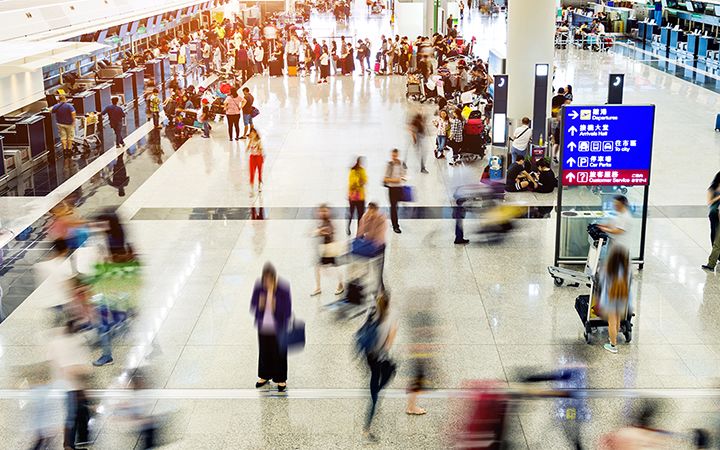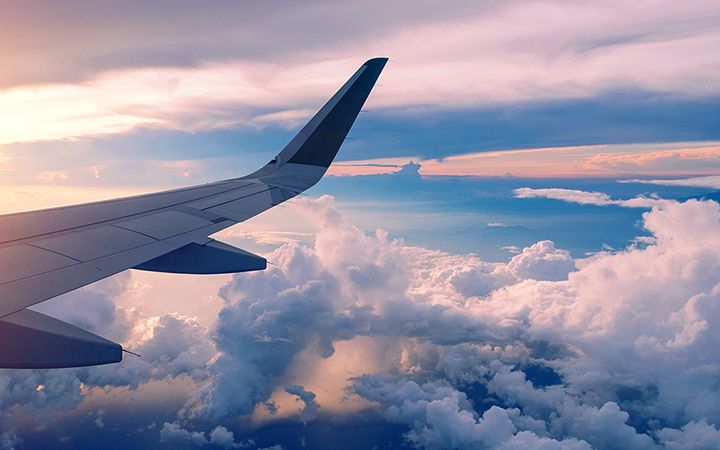Airline and demand recovery
Airports in the post-COVID environment need to understand airline economics better than ever.
A permanent drop in lucrative business traveller numbers; a vastly increased presence for low-cost carriers; and a market skewed by government intervention—these are the new realities that airport executives will face as we emerge from the COVID-19 pandemic.
The reality of post-pandemic travel will create unprecedented challenges for airport management. Long-term planning and forecasting, always uncertain, will need to incorporate even greater variability when addressing unpredictable factors such as slow removal of international travel restrictions due to uneven vaccine rollouts an increase in smaller airlines using fewer long-haul aircraft, and a greater focus on cost reduction by airlines in general.
Shifting passenger segmentation
For full-service network airlines, business travelers are royalty: they travel more frequently and on shorter notice, book into premium cabins, are more likely to travel internationally, and—importantly—pay considerably more for their tickets, on average, than either leisure or visiting friends or relatives (VFR) passengers.
Take the transatlantic market: in 2019, only 12% of all travelers flew in premium cabins (first or business class), yet these accounted for 46% of total ticket revenue. Add in premium economy and the total passenger share goes up to 17%, yet the total revenue share climbs to 56%. This is in line with broad industry estimates that, pre-COVID, business travelers were responsible for 55%-75% of network airlines’ profits worldwide.
In terms of passenger recovery over the next few years, business travel is almost certain to recover last. Large companies, which represent most premium business travel, are generally more risk averse compared to small and medium business enterprises, and are expected to wait longer before allowing employees to travel again for work.
Furthermore, after a year of using virtual meetings, companies have discovered that many business deals can indeed be conducted successfully without the need for expensive travel. Although economic recessions often herald predictions of reduced business travel due to the “discovery” of substitute technologies, these have never been borne out—until now. This past year, nearly the whole world stopped traveling, and all these engagements went virtual, with conferencing software finally sophisticated enough to pick up the slack. In an interview with AP, Ed Bastian, CEO of Delta Air Lines, stated that business travel may be permanently down 10%-20% compared to pre-COVID levels; other airline executives and trade groups are more optimistic but still expect business travel to be down for years to come.
ICF’s latest COVID-19 traffic recovery forecast estimates that global passenger levels will not recover to 2019 levels until 2024. However, with fewer business travelers and less international travel, the result will be lower average fares for airlines. For example, early data from China has shown that average domestic airfares remained consistently depressed at about 40% lower than pre-COVID levels, even as Chinese domestic air travel started to return beginning in mid-2020.
U.S. data presents an even starker picture: while domestic air travel had a significant recovery in Q3 2020, average airfares continued to fall from the low $170s of Q2-Q3 2019, to $127 in Q2 2020, and then even lower to $113 in Q3 2020.
Low-cost carriers will emerge from the pandemic in a stronger competitive position.
Such uncertainty means that what worked pre-COVID may not work moving forward. While the near cessation of business travel has seriously impacted the entire industry, many low-cost carriers (LCCs) such as Wizz Air in Europe and Allegiant Air in the U.S. are using the current circumstances to grow their market share.
LCCs have played a major role in the expansion of aviation over the last two decades. Once the industry has weathered the current crisis, we expect they will emerge in an even stronger position. Across the three largest aviation markets (Asia, Europe, and North America), the growth of LCCs is clear. In Europe, LCCs now operate 44% of intra-regional seat capacity, accounting for over 80% of all seats that the industry added in the 2010-19 period.
Asia exhibits a similar trend as LCCs have added over 60% of incremental seats since 2010, taking the LCC market share from 17% in 2010 to 28% in 2019. North America has seen more modest gains as LCCs have now reached a 35% seat share compared to 28% in 2010.
In terms of response to the pandemic, LCCs have benefited through their ongoing efforts to cut costs, maximize efficiency, and grow revenues, compared to full-service network carriers. LCCs have a lower and more variable cost base than full-service carriers, which has allowed them to minimize cash burn more effectively. They have also demonstrated their flexibility to add/take out capacity, make network adjustments, and target new opportunities.
Over the last year in Europe, North America, and Latin America, LCCs have continued to take market share, reflecting their more aggressive capacity deployment and stronger load factor performance. However, in Asia the trend is mixed. While LCCs have seen gains in large domestic markets like China and India, LCCs like AirAsia that are reliant on international leisure travel are struggling. A wider market recovery in Asia will be linked to the outbound leisure travelers from markets such as China.
In the short term, we will likely see full-service carriers redeploying a greater share of their capacity onto leisure markets, leading to an increased overlap with LCCs. We have already witnessed numerous examples of this in the U.S. Over the winter season, United and American introduced 29 and 13 new point-to-point routes, respectively, catering exclusively to leisure demand, primarily to beach cities in Florida and Mexico. Our view is that this will put further pressure on fares, especially outside the peak travel periods and continue to exacerbate industry losses until demand starts to return toward 2019's levels.
Airline industry competitiveness hindered by large government bailouts.
Under normal circumstances, larger carriers with the scale and flexibility to capture recovering demand are better positioned than those reliant on smaller and more constrained markets. To compare the three largest regions in terms of capacity, the North American market is heavily concentrated when compared to Europe and Asia and has been for over a decade. Using the Herfindahl-Hirschman Index (HHI), a measure of market concentration, North America’s is over three times that of the comparable markets in Asia and Europe. Although the latter have seen increased market concentration in the past decade, they remain far below North America. This explains why North America—and in particular the U.S.—is far and away the world’s most profitable airline industry, accounting for over two-thirds of airline net profits in 2019, with margins two to three times higher than in Europe or Asia-Pacific, respectively. Hence, further consolidation would support a healthier, sustainable airline industry that is better able to withstand shocks.
The public money supporting airlines might affect the competitive landscape. It already skews public policies on airport charges or slots. It might soon distance private investors from the entire sector.
However, COVID-19 may have put the brakes on consolidation. Although revenue has dried up, airlines have survived thanks to a combination of unprecedented government aid; receptive capital markets that have lent billions of dollars secured by fleets, slots, loyalty programs, and even brand as collateral; and concessions from aircraft lessors who have had no alternative but to provide rent relief.
Over the last year, debt among the world’s top 50 airlines has increased by $60bn (+22%). Airlines in the U.S. have secured over $60bn in government support, while peers in Europe have sought over $50bn in state aid. Airline leverage has reached historically high levels and airlines continue to burn cash, but this unprecedented windfall has limited the number of bankruptcies.
Is this a good thing for the airline industry? There is growing concern that the combination of government aid, cheap capital, and distressed-value aircraft that incentivize airline start-ups will set back much-needed industry consolidation. While full-service carriers have reduced the size of fleets, particularly aircraft suited for long-haul international markets, the number of players a year into the pandemic is virtually unchanged. Add to this the bearish outlook for higher-yield business traffic, and the conditions are in place for low-cost carriers to increase their market share in all world regions. We also anticipate numerous start-ups attempting to break into the market. There are already several notable ones such as Breeze Airways and Avelo Airlines in the U.S., Flyr and Play in Europe, Flybig in India, or ITA in Brazil.
As traffic recovers, we are likely to see an era of heightened competitiveness and reduced profitability as many airlines chase after reduced demand. Although this is only a possibility, the shape of the recovery and government actions to support the industry could again change the outlook. What is certain is that prior metrics of gauging how airlines in the industry fail, consolidate, grow, and compete are becoming increasingly opaque—stability may be elusive for many years to come.



